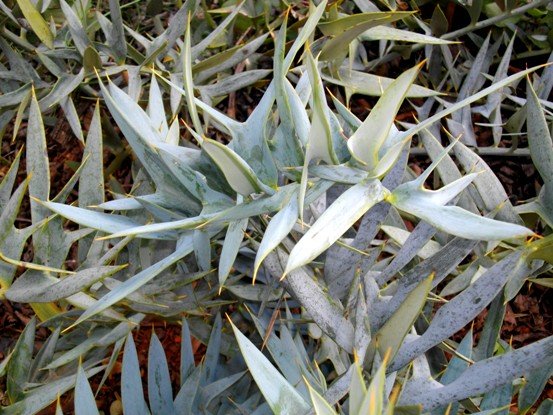Encephalartos horridus blue leaves with orange spines

Author: Ivan Lätti
Photographer: Ivan Lätti
The leaves of Encephalartos horridus have leaflets bluer in colour than any of the other grey-blue leaved Encephalartos species. Leaves usually recurve towards their tips, comprising two opposing arrays of many leaflets. Young leaves have a waxy covering. The leaves of this Encephalartos species do not droop during coning, as happens in some of the other species.
The main part of each leaflet may be straight or curved and oblong with smooth margins, attenuating to a spiny tip. A couple of smaller lobes, on one side only, are present near the base of a leaflet, variously twisted or angled, also with smooth margins and spiny tips. This gives the leaves a busy, convoluted appearance, different from the often regular, parallel leaflet arrangement on the typical Encephalartos leaf.
The specific name, horridus, means bristly, dreadful or horrible. The first refers to the spiny tips that point to the observer at several angles; the latter two anticipate the sensation of inadvertent body contact with the spines. Overcome the sensation and this remarkable plant has attractive leaves; attractive in the sense of being pretty (Hugo, 2014; iNaturalist; www.plantzafrica.com).

